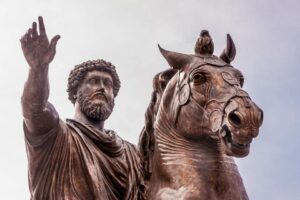The Stoa Poikile, also known as the Painted Stoa or the Colonnade of Peisianax, was a famous public building located in the ancient Athenian Agora. It was a significant architectural and cultural landmark in ancient Greece and held importance for both philosophical and historical reasons.
Stoa Poikile
The Stoa Poikile was a colonnaded building that served as a public gathering place and a centre for philosophical discussions in ancient Athens. The term "stoa" refers to a covered colonnade or portico. The Stoa Poikile was adorned with various paintings, which gave it the name "Poikile," meaning "painted." The purpose of the Stoa Poikile was multifaceted. It provided shelter from the elements for people engaged in public activities, including philosophical conversations, debates, and lectures. It also functioned as a public space for civic and political discussions.
The Stoa Poikile holds great significance in the history of philosophy as it served as a gathering place for early Stoic philosophers. Stoicism was a philosophical school founded by Zeno of Citium in the early 3rd century BC. Prominent Stoic philosophers, including Cleanthes and later Chrysippus, would meet and teach within the Stoa Poikile. The Stoics emphasised living in accordance with nature, cultivating virtue, and maintaining inner tranquillity in the face of external circumstances. Their teachings had a profound influence on later Stoic philosophers, including Seneca and Epictetus.
The Stoa Poikile, unfortunately, no longer exists in its original form. Over time, the building fell into disrepair and was eventually demolished. Today, only the foundation and some fragments of the Stoa Poikile's columns remain. However, its influence on ancient Greek culture and philosophy is still remembered and studied.
Related Semantic Entities for Stoa Poikile
